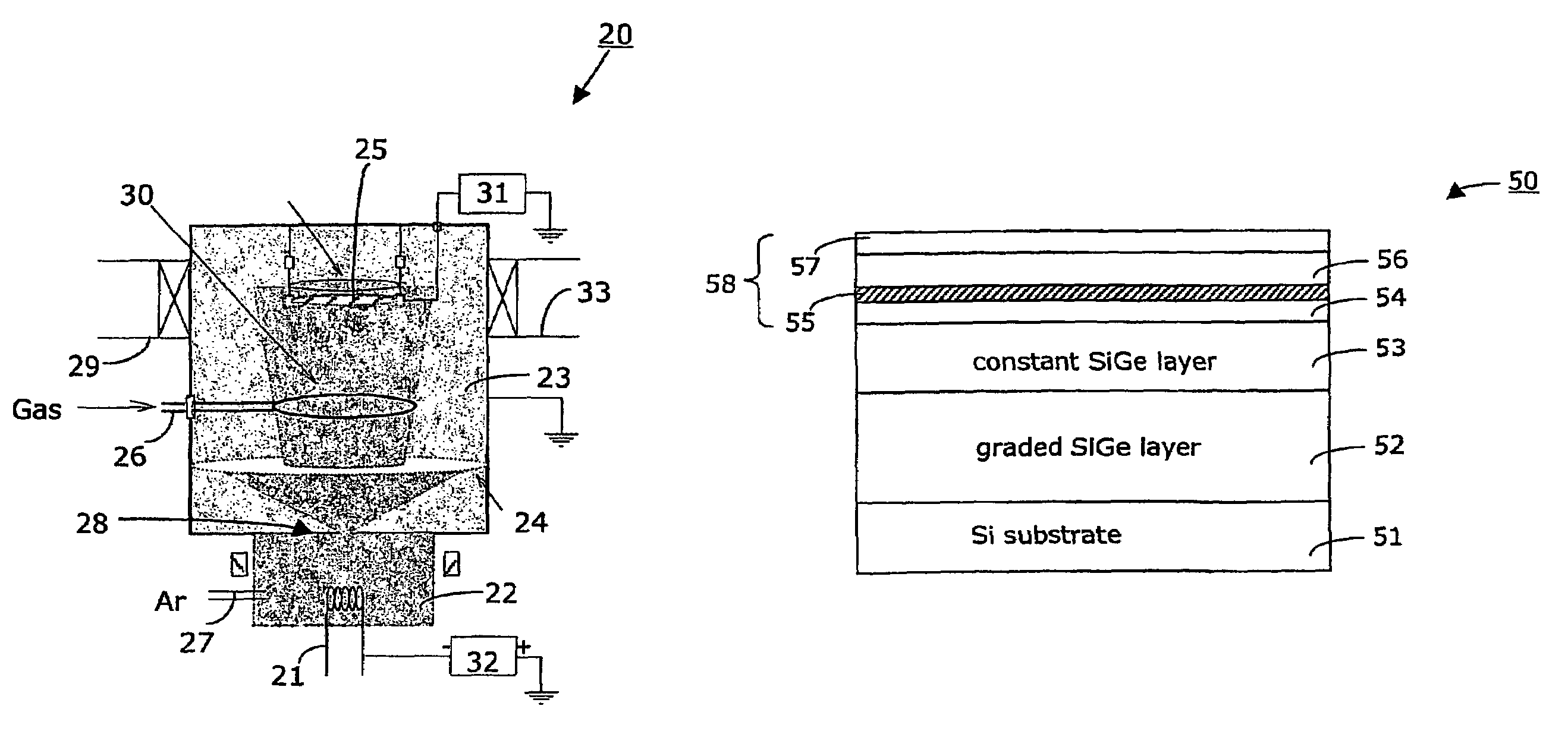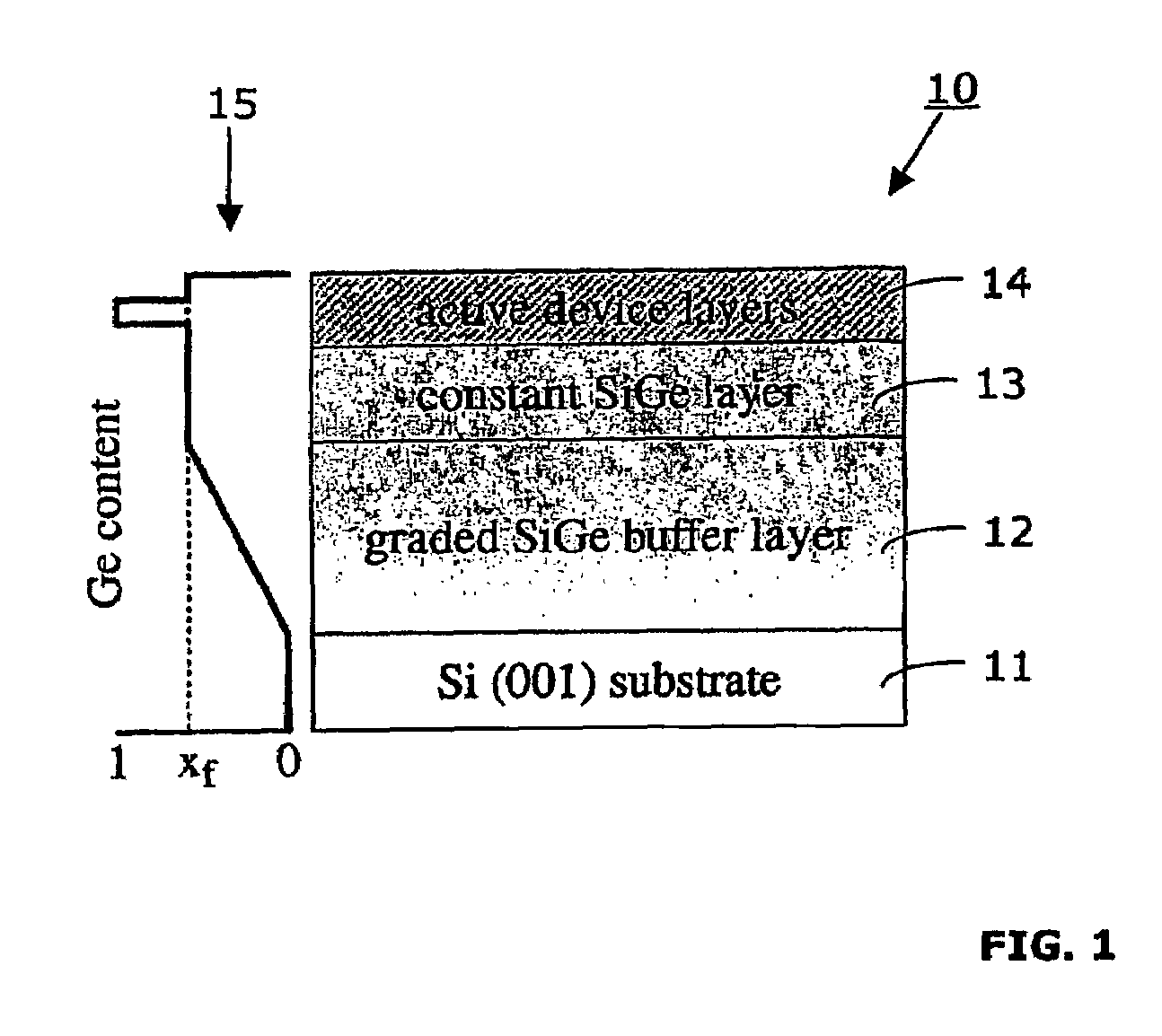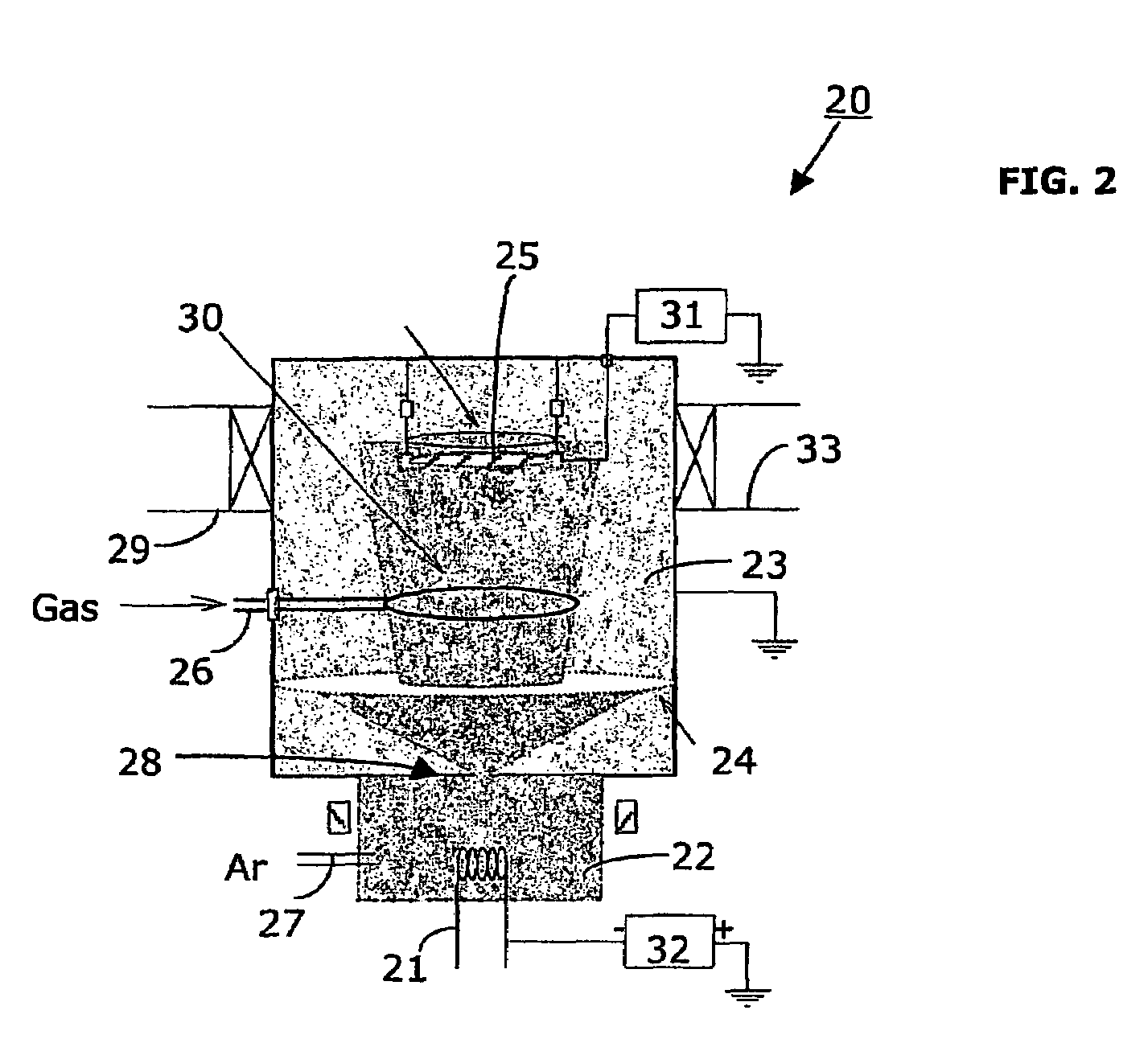Formation of high-mobility silicon-germanium structures by low-energy plasma enhanced chemical vapor deposition
a technology of low-energy plasma and chemical vapor deposition, which is applied in the direction of chemical vapor deposition coating, coating, semiconductor devices, etc., can solve the problems of low growth rate, difficult fabrication of ge-rich sige structures and devices, and high unfavorable industrial mass production, and achieve the effect of dramatic increase in growth ra
- Summary
- Abstract
- Description
- Claims
- Application Information
AI Technical Summary
Benefits of technology
Problems solved by technology
Method used
Image
Examples
Embodiment Construction
[0043]The present invention takes advantage of the principle of strained layer epitaxy when two materials with different lattice parameters are grown on top of one another. When germanium (Ge), for example, is deposited on top of a substrate with a smaller lattice parameter, the Ge atoms line up with the atoms underneath, compressively straining the Ge. In the strained Ge, for example the holes experience less resistance and have the ability to flow faster. This effect can be used to realize devices that are faster without having to shrink the size of the individual devices.
[0044]The silicon has slightly smaller spaces between the atoms than the germanium crystal lattice. A SiGe-layer thus has a lattice constant that is larger than the lattice constant of silicon. The lattice constant of SiGe increases with increasing concentration of the Ge.
[0045]The present invention relies on low-energy plasma enhanced chemical vapor deposition (LEPECD). A typical LEPECVD system 20 is depicted in...
PUM
| Property | Measurement | Unit |
|---|---|---|
| temperature | aaaaa | aaaaa |
| temperature | aaaaa | aaaaa |
| temperature | aaaaa | aaaaa |
Abstract
Description
Claims
Application Information
 Login to View More
Login to View More - R&D
- Intellectual Property
- Life Sciences
- Materials
- Tech Scout
- Unparalleled Data Quality
- Higher Quality Content
- 60% Fewer Hallucinations
Browse by: Latest US Patents, China's latest patents, Technical Efficacy Thesaurus, Application Domain, Technology Topic, Popular Technical Reports.
© 2025 PatSnap. All rights reserved.Legal|Privacy policy|Modern Slavery Act Transparency Statement|Sitemap|About US| Contact US: help@patsnap.com



